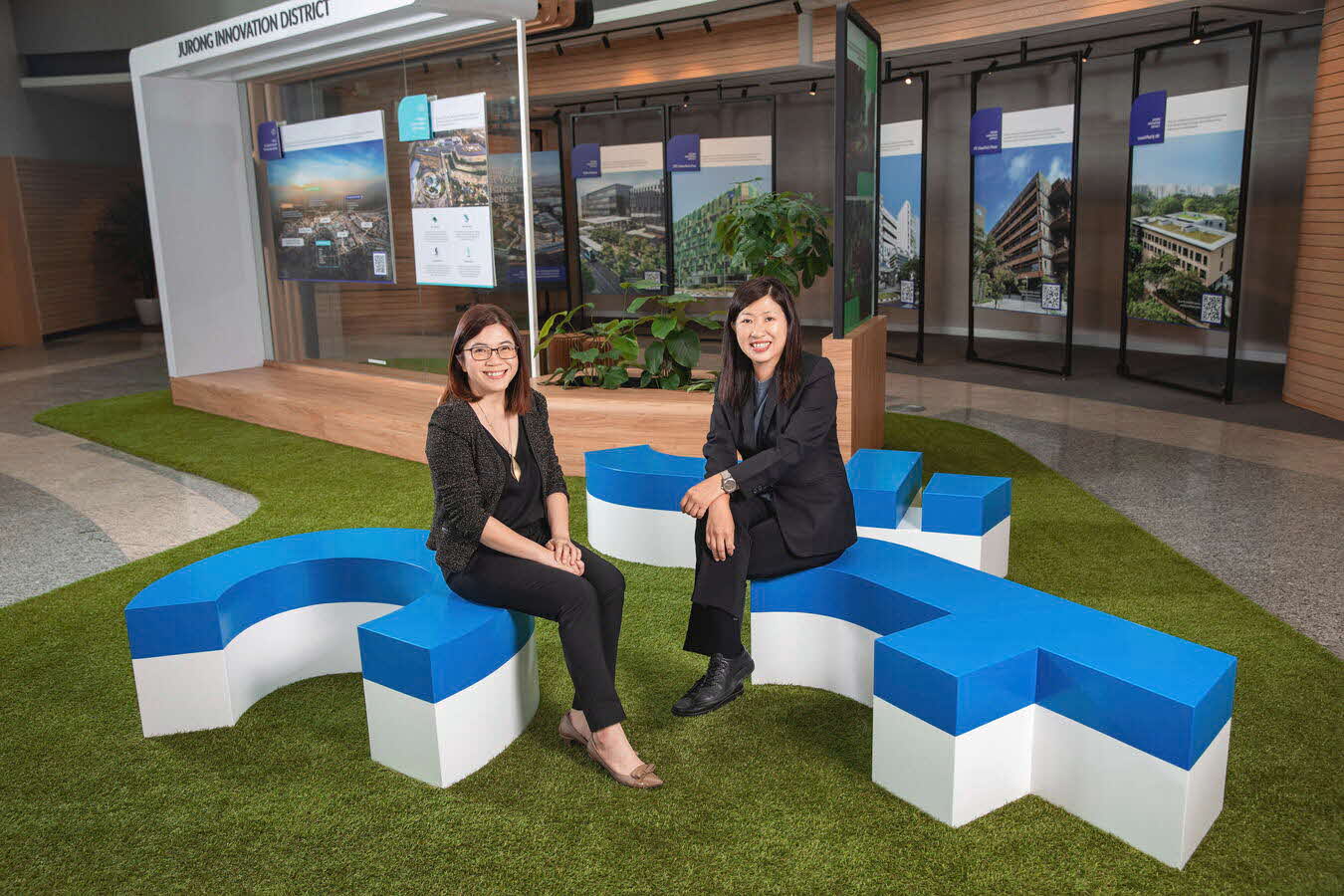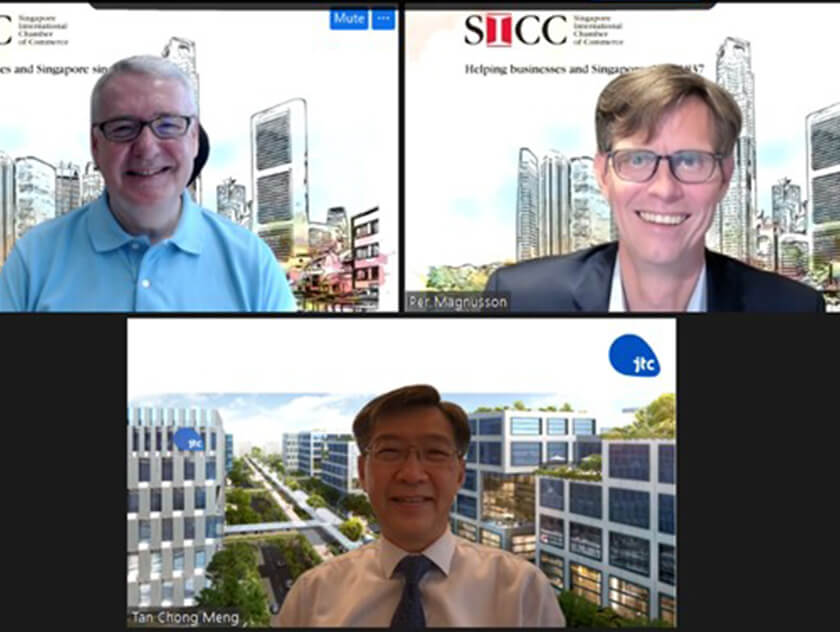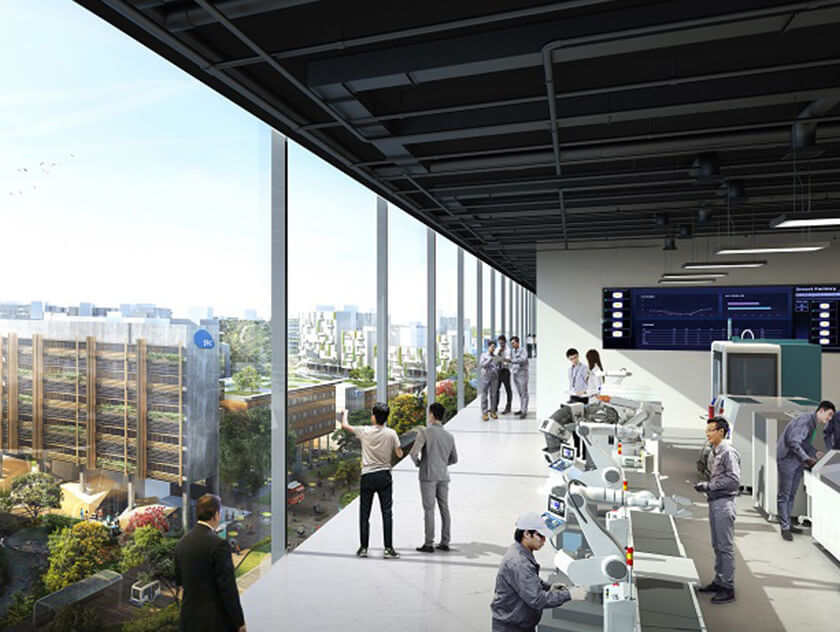JTC CleanTech Three, which sits adjacent to Thow Khang Dragon Kiln, draws inspiration from pottery and terracotta for its exterior walls. Using building materials and textures imitating tree bark, rocks, and red bricks to add warmth, it breaks away from the cold and grey image of traditional factories. The design is closely integrated with its surroundings, featuring nine staggered buildings adorned with greenery and even a wildlife corridor, fostering close interaction between humans and nature.
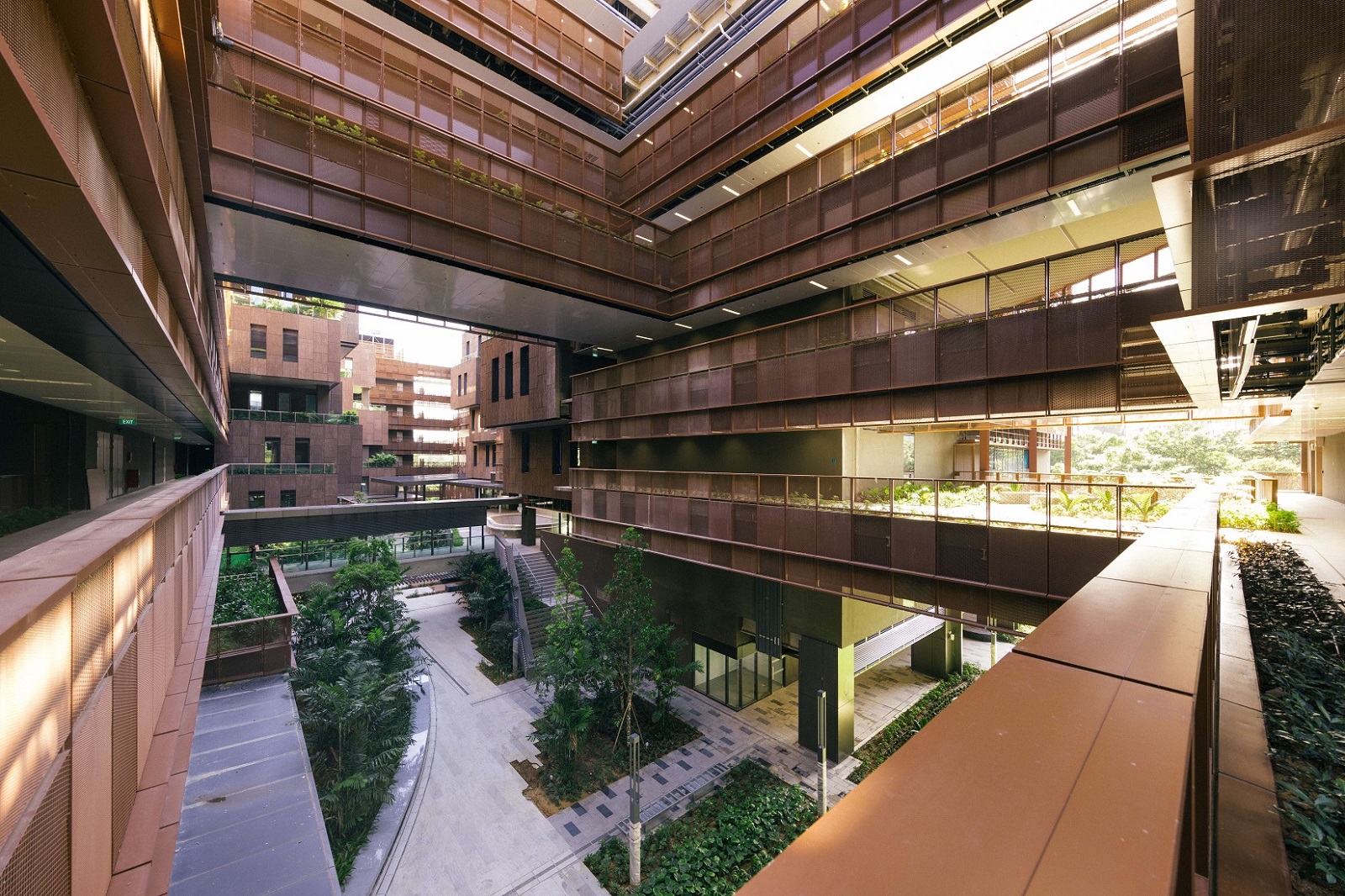
As the car I’m in moves down Cleantech Loop, parallel to Lorong Tawas, I notice that JTC CleanTech Three (CT3), the building I am about to visit, is situated next to Singapore's last remaining dragon kiln. Dating back to the 1940s, the kiln holds nearly a century’s worth of history. Adjacent to it lies the Jurong Eco-Garden, lush and verdant, with glimpses of the dragon kiln workshop and its walls made of ceramic vases peeking out playfully from the greenery.

While waiting at the building’s drop-off point for a JTC personnel, my attention is drawn to the neatly aligned, red-brick-like exterior walls, prompting an urge to feel them. The hue and texture of the terracotta-like walls brought back images of Jurong from half a century ago as Jurong was the largest brick production area in the country during Singapore’s construction boom in the 1970s. To a visitor, the juxtaposition and coexistence of the historic dragon kiln, symbolising traditional manufacturing, and the new CT3 building, representing Industry 4.0, feels like an innovative marriage of ideas.
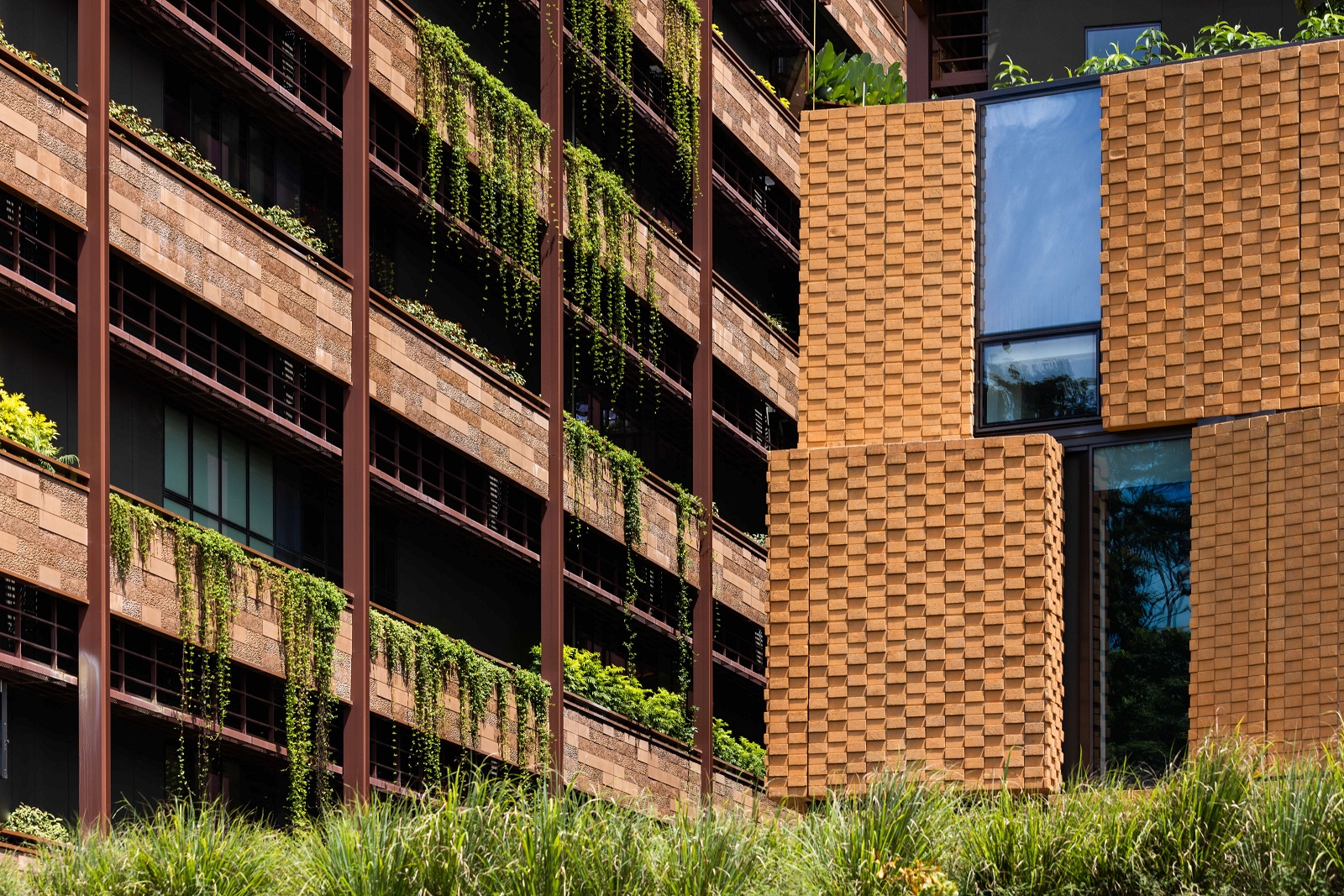
Breaking the traditional factory building design
Upon entering the 30,000sqm development, visitors are greeted by vast expanses of terracotta hues. The materials, with varying textures embedded in the exterior walls, create the impression of being surrounded by red cliffs, akin to standing within a grand canyon. Lin Yanyun, deputy director of JTC’s Urban Planning & Architecture Division, shares: "We wanted to move away from the traditional industrial building design and create distinctive manufacturing buildings unlike anything that was done before.”
The 620-hectare Jurong Innovation District (JID) is poised to become a part of Singapore’s second central business district of the future. As the master planner and developer, JTC intends to set a new direction for Industry 4.0 development with CT3, attracting clean technology and advanced manufacturing companies and talent, fostering the emergence of high-value industries, and reshaping the model of work, live, play, and learn.
Lin emphasises that the close integration of the building's design with nature and the community highlights JID’s commitment to ensuring connectivity, greenery and sustainability under the Industry 4.0 framework.
The lead architects of this development are Un Wai Kay and Peter John Evans from Architects 61. Celebrating its 50th anniversary this year, Architects 61 has designed many of the major commercial and residential buildings in Singapore’s central business district, including Marina One, 63 Robinson Road, 71 Robinson Road, Ocean Financial Centre, Asia Square Tower, and the refurbished Singapore Land Tower.
The design of CT3 by Architects 61 is befitting to usher in a new chapter for Singapore’s upcoming second central business district. The firm began designing and constructing the project in 2017, and upon its completion in June 2022, it received widespread recognition within the industry. The building received the Merit Award from the Singapore Institute of Architects Architectural Design Awards 2023 and the Building and Construction Authority’s Green Mark Platinum Award in the same year.
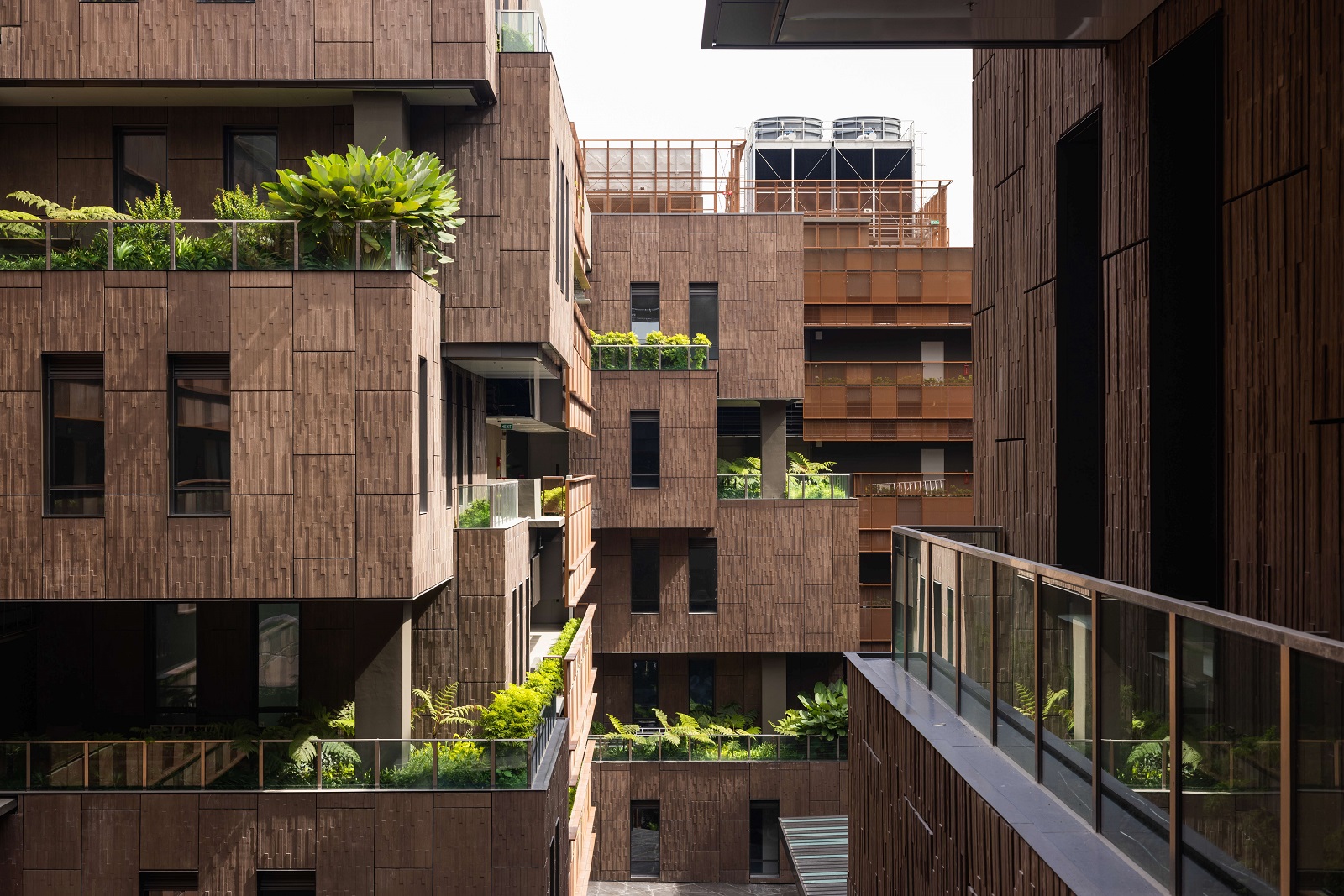
Creating the feel of a canyon with a nine-block cluster
Un explains that the dragon kiln sparked their creative juices: "When we first surveyed the site, it was surrounded by jungle, with sightings of snakes. All we could see was the kiln, which inspired our design for the building's façade."
Evans reveals that the design team created moulds to imprint the textures of tree bark, rocks, terracotta, and bricks onto Glass Fibre Reinforced Concrete (GFRC) panels used for the building's exterior. This pays homage to the surrounding forest, the kiln, and Jurong's brick-making history. He says: "These panels are embedded in the building’s walls, which have been waterproofed. The colours of the panels are natural and integrated into the concrete during manufacturing, ensuring durability without special maintenance. This design brings a handcrafted warmth to the space, dispelling the cold and grey image of traditional factory buildings. While investing in creating the tech economy of the future, there’s also a connection to nature, with a grounded feel.”
The design team divided the development into nine blocks, resulting in heavy structures that feel light and welcoming, evoking the sensation of being in a canyon. This layout facilitates the permeation of natural light and air, with access available from nine different entrances in all directions. Additionally, each building is designed with staggered recesses, further enhancing the natural canyon ambiance.
Un says: "We intentionally divided the development into nine blocks to create a more open space, avoiding the oppressive feeling of being trapped. Open spaces help stimulate creative thinking." Evans adds: "This design enhances ventilation and coolness, reducing the need for air conditioning, saving energy, and providing a welcoming and comfortable atmosphere."
The team chose not to level the land but designed according to the original terrain, respecting the topography, and creating the experience of walking downhill when moving from the front to the back, reminiscent of walking through a canyon. Un notes that this posed a significant challenge for the construction contractors, who had to meticulously build on uneven ground.

Creating a car-free, eco-friendly park
The nine blocks are connected to each other via multiple skybridges, encouraging movement, interaction, and collaboration among different companies, reflecting JTC's vision of bridging talent, technology, and knowledge through strategic planning.
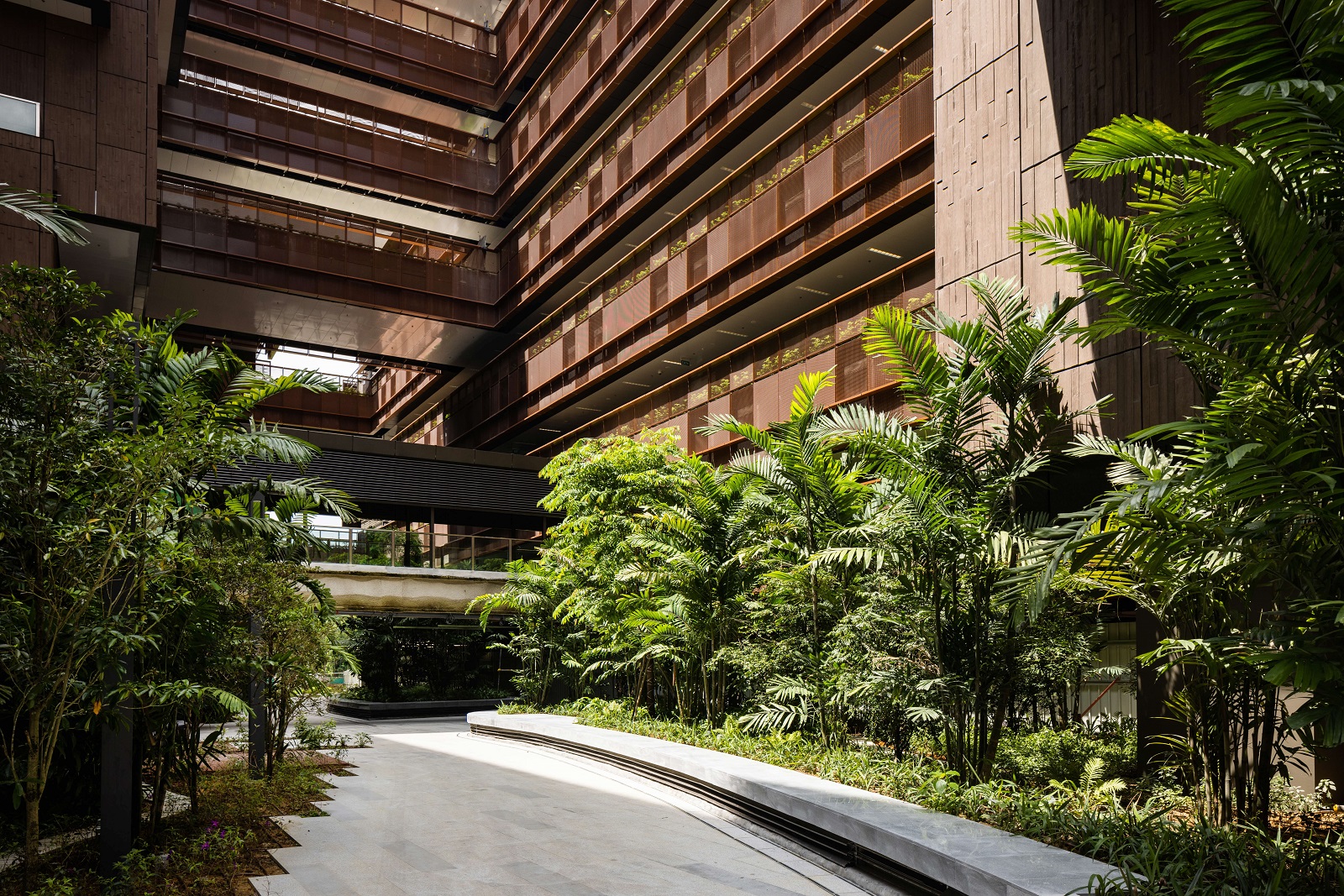
This concept of connectivity also reflects JID’s broader goal. Lin reveals that upon completion, JID will feature an 11-kilometre-long Sky Corridor traversing the entire district. The Sky Corridor will promote walking and cycling, with dedicated lanes for autonomous vehicles. It will also link to MRT stations, bus stops, external cycling networks, and park connectors, thus creating a comfortable, convenient, and safe car-free eco-friendly park.
Unlike traditional manufacturing districts, JID’s connectivity also extends outwards to the neighbouring communities to foster vibrancy. A new pedestrian bridge will link Jurong West with CT3, enabling residents to easily cross the busy Pan-Island Expressway and access facilities like the Jurong Eco-Garden and dragon kiln. This ensures that the park space is fully utilised, bringing together work, life, and leisure seamlessly.
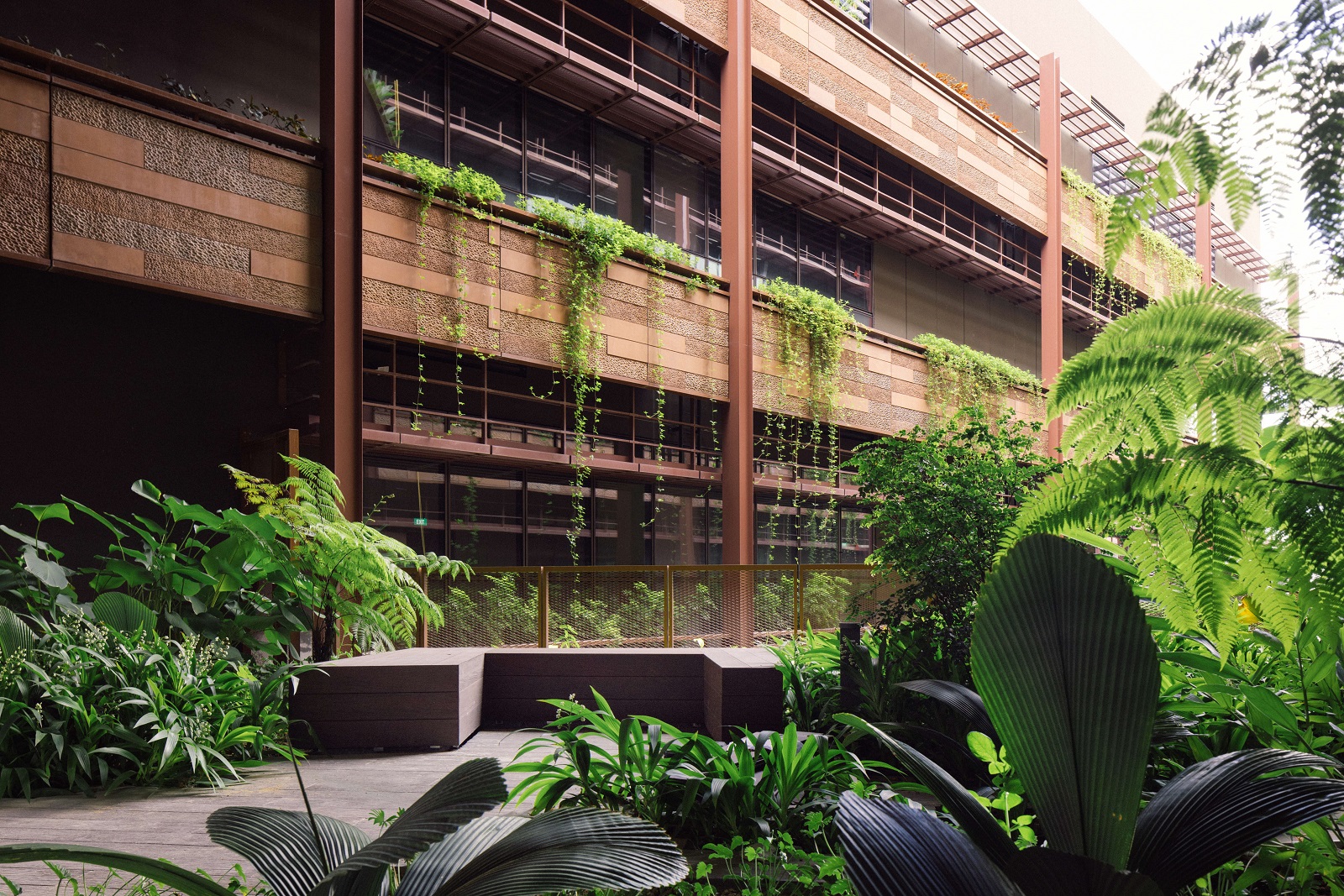
Greenery galore
The architects also introduced extensive greenery into the area, creating a close green connection between CT3 and the adjacent Jurong Eco-Garden. Evans reveals that the cluster of buildings also includes 25 communal terrace gardens and 11 communal rooftop gardens. The blocks are adorned with green walls; corridors, railings, and windows on each floor are lined with potted plants and climbing vines; staircases on the first and second floors feature tiered planters. No matter where you stand, a refreshing touch of green is always in sight. He says: "The staggered design of the floors creates additional spaces between the buildings, allowing us to place gardens."
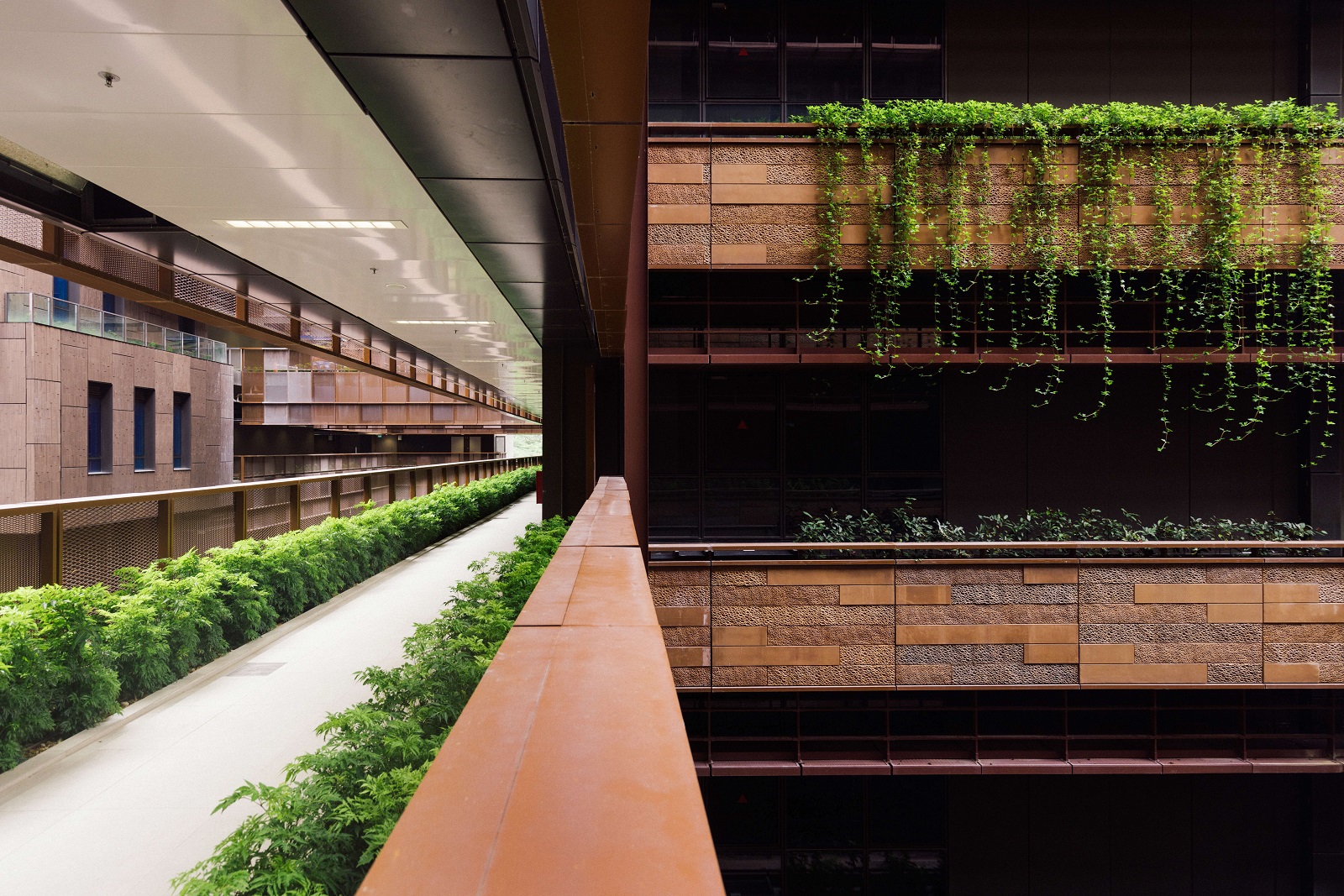
These gardens appear in unexpected places, providing private, delightful spots for the people working there. I was particularly struck by one of the terrace gardens in one of the buildings — a small garden revealed by an unassuming door at the end of a long corridor. On a day of heavy rain, I stood at the door, admiring the lush plants washed clean by the rain, yearning to step onto the grass.
Evans credits this extensive greening strategy to JTC's visionary planning. Lin discloses that one to two years before the design phase, JTC commissioned a biodiversity study for the site, establishing guidelines for integrating the project with the local environment. As a result, there is a wildlife corridor that runs between a block on the far left and the other eight. The wildlife corridor maintains its original level lower than the surrounding buildings, with the occasional sightings of wild boars, snakes, and monkeys. People standing on the bridges spanning over the wildlife corridor can enjoy the dense jungle views and sometimes spot wildlife, maintaining a harmonious yet separate coexistence.
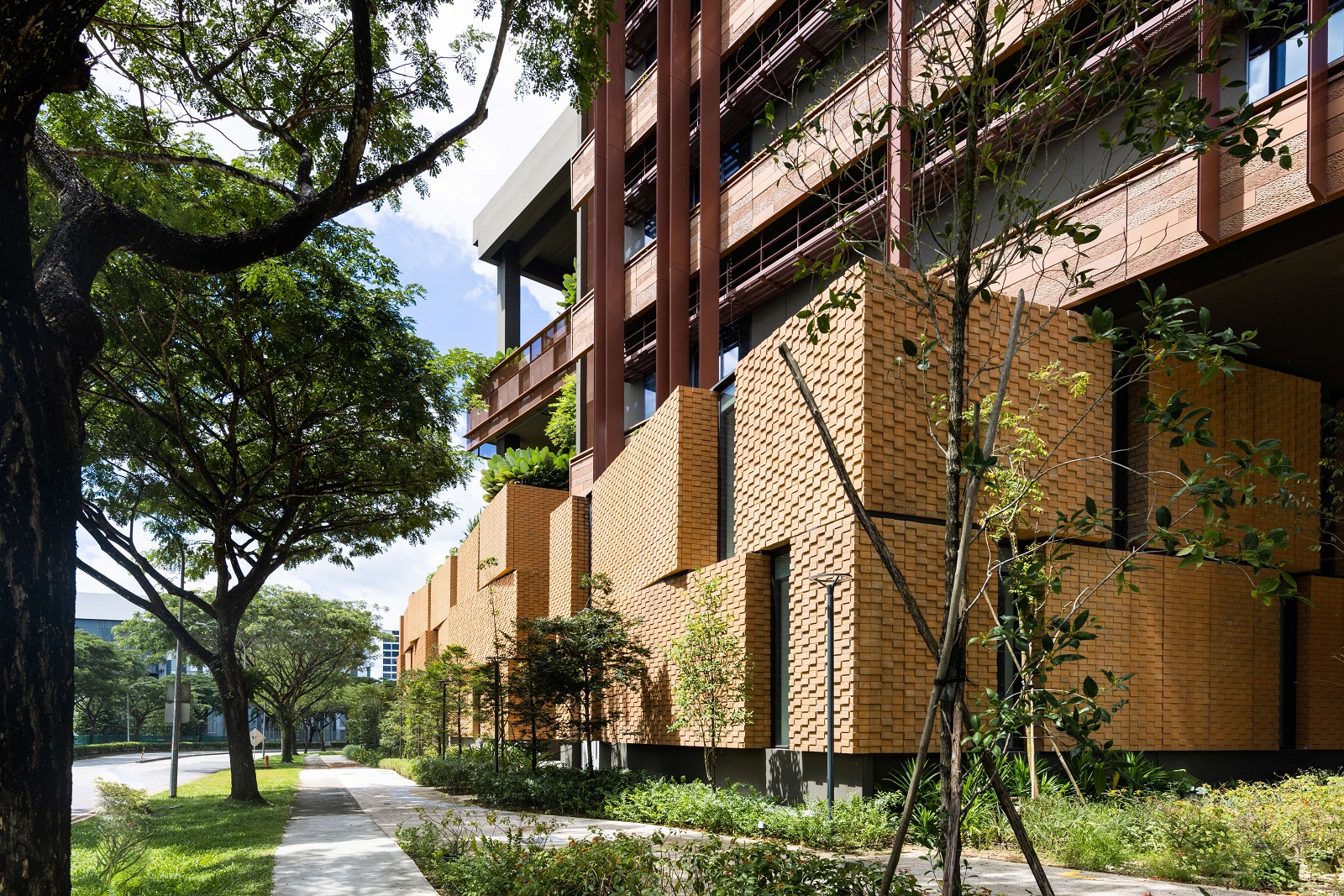
The nine blocks consist of nine-storey office buildings and seven- to eight-storey laboratory buildings, with a total of 376 units. Currently, 30 clean technology and advanced manufacturing tenants have moved in, including Spectronik, a local company developing air-cooled hydrogen fuel cells; VFlowTech, a local startup aiming to create the world’s best vanadium redox battery; the Bosch Rexroth Regional Training Centre, and Makino, a manufacturer of CNC machine tools.
With the Jurong Region Line set to operate in 2027 and with Tawas MRT station next to CT3 becoming operational, transportation will be more convenient for this development, likely attracting more businesses and residents.
While the “hardware” is in place, the “software” needs to be refined. I previously read about the uncertain fate of the dragon kiln. For JID to remain connected to the local community, efforts could be made to preserve the kiln, encourage collaboration between clean technology and advanced manufacturing sectors, and explore ways tradition and technology can be integrated. Furthermore, not all urban dwellers may know how to deal with their wild “neighbours”, so planning and development groups may consider enhancing education to help the community learn how to coexist harmoniously with wildlife within the park.
Translated from the original article, 裕廊新工业大厦 人造峡谷与大自然融为一体, 10 March 2024, by JTC, any errors please check back with JTC.
